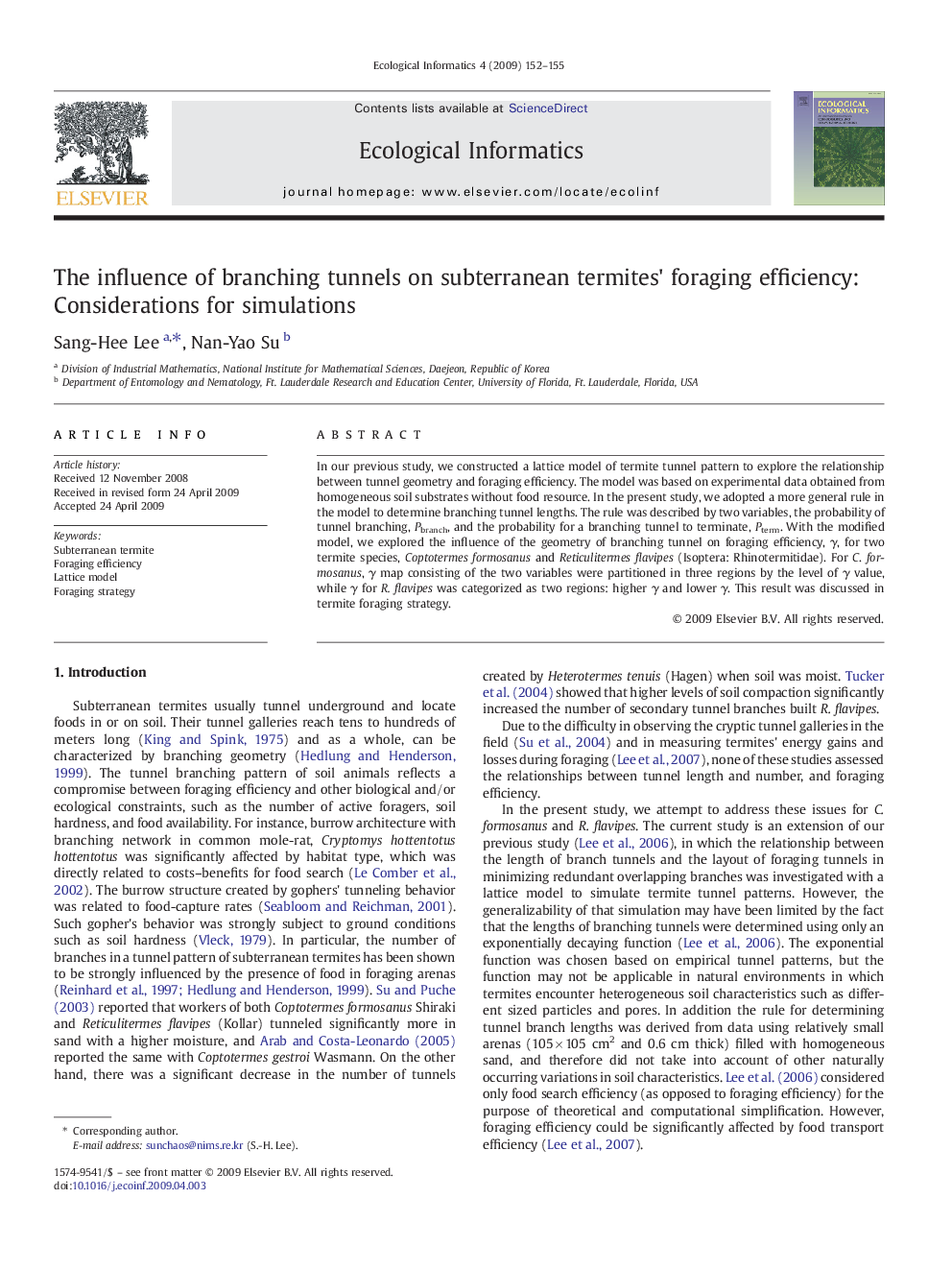| Article ID | Journal | Published Year | Pages | File Type |
|---|---|---|---|---|
| 4375183 | Ecological Informatics | 2009 | 4 Pages |
In our previous study, we constructed a lattice model of termite tunnel pattern to explore the relationship between tunnel geometry and foraging efficiency. The model was based on experimental data obtained from homogeneous soil substrates without food resource. In the present study, we adopted a more general rule in the model to determine branching tunnel lengths. The rule was described by two variables, the probability of tunnel branching, Pbranch, and the probability for a branching tunnel to terminate, Pterm. With the modified model, we explored the influence of the geometry of branching tunnel on foraging efficiency, γ, for two termite species, Coptotermes formosanus and Reticulitermes flavipes (Isoptera: Rhinotermitidae). For C. formosanus, γ map consisting of the two variables were partitioned in three regions by the level of γ value, while γ for R. flavipes was categorized as two regions: higher γ and lower γ. This result was discussed in termite foraging strategy.
